Black Sunday (1960)
Directed by: Mario Bava
Written by: Ennio De Concini, Marcello Coscia, Mario Bava, Mario Serandrei, Nikolai Gogol
Starring: Andrea Checchi, Barbara Steele, Ivo Garrani, John Richardson
Italy
AKA LA MASCHERA DEL DEMONIO, THE MASK OF SATAN, THE REVENGE OF THE VAMPIRE
AVAILABLE ON BLU-RAY AND DVD
RUNNING TIME: 87 min
REVIEWED BY: Dr Lenera, Official HCF Critic
Moldavia, 1630: witch Asa Vajda and her lover Javuto are sentenced to death for sorcery by Asa’s brother, but Asa vows revenge and puts a curse on her brother’s descendants before having a metal mask with spikes on the inside hammered into her face and being burned at the stake. Two centuries later, Dr. Thomas Kruvajan and his assistant Dr. Andre Gorobec are travelling through Moldavia en route to a medical conference when one of the wheels of their carriage is broken. While waiting for their coachman to fix it, the two wander into a crypt containing Asa’s tomb where Thomas accidently resurrects Asa when he cuts his hand and blood drips on to her face. The two move on to the house of Prince Vajda and his daughter Katia, with whom Andre becomes immediately besotted, while Asa resurrects Javuto….
If you’ve been following my series of reviews of films by Mario Bava, you’re possibly surprised, if you’re familiar with his work, why it’s taken me so long to get to Black Sunday, his first [credited] directorial effort and the film which not only made his name but still remains his best known. Very soon after the birth of this website, I did a short-ish review of it but, as I occasionally do, I found the earlier review wanting and feel that I can do the movie more justice now. Talking about Black Sunday, which is apparently Tim Burton’s favourite horror movie, is like walking across a tightrope for me – it’s undeniably a horror classic, often beautifully atmospheric and resonantly poetic, its fairytale-like ambience and echoes of the good old Universal horror movies always very pleasing. However, I do feel that Bava made several films that are just as good and three [The Whip And The Body, Lisa And The Devil, Rabid Dogs] that are superior, Black Sunday often seeming like a dry run for some of his later works which would develop further the ideas and themes introduced in the 1960 film which would fascinate Bava throughout his career [i.e. the deceptive nature of appearances, the family being destroyed], while the black and white format doesn’t really allow Bava to demonstrate his unique method of lighting. Yet it was Black Sunday which made me personally fall in love with this director’s work after just a few scenes. I saw it when I was about 12 years old on TV on a double bill with his Lisa And The Devil, and a greater introduction to the great man one can’t really have: his first, most popular, and one of his most ‘approachable’ films, followed by his strangest and most artistic film, a film which is also his masterpiece.
Bava had just stepped in to complete Riccardo Freda’s The Lust Of The Vampire and Caltiki The Immortal Monster for Galatea Film. Given the chance to make anything he wanted to as long as it was cheap, he chose Nikolai Gogol’s 1865 short story Viy, later adapted for the cinema three times in Russia and once in South Korea, about a man who kills a witch, then has to read psalms over her corpse for three nights, but Bava threw out most of it. Star Barbara Steele, in her first film, was difficult on set, insisting on changing, several times, her fangs [which ended up not being used] and her wig, insisting a double did her nude scene then doing it anyway as she didn’t like the double, and even refusing to come to the set, though that was because somebody told her they was using a film-stock that made people appear naked. The cast never saw a screenplay for the film and were simply handed their dialogue every morning. Exteriors and a few interiors, were shot at a castle in Arsoli, Rome. Despite being a hit in Italy, AIP re-dubbed the film for its US release which toned down certain aspects like Asa and Javuto being brother and sister, put on a new score by Les Baxter which was more ‘in your face’, and cut out three minutes comprising three whole scenes, two of them romantic moments, and all of the gory shots as well as Thomas kissing Asa. The film became AIP’s biggest hit yet. In the UK the BBFC banned it for eight years. The 1968 release entitled Revenge Of The Vampire was the Italian version, with the original English dub, but removing the same gory shots that AIP did [otherwise it was complete]. Bava claimed that an American company approached him about doing a colour remake, while in 1989 his son Lamberto made a semi-remake under the same title.
It’s Black Sunday’s opening scene which is its most famous moment and it still packs a punch, despite some unnecessary narration which tells us what the audience would be able to pick up [though the US release had narration which made it even clearer to the point of treating them like idiots]. Asa’s back is branded in loving close-up, then the mask with spikes on the inside is placed on her face, Bava giving us several close-ups of the spikes as the mask is carried towards the camera to make sure we really do get an idea of the horror, before somebody smashes the mask onto Asa’s face with a hammer, blood pouring out from the mask. It’s easy to see why the scene had such an impact in 1960 – yes, Hammer’s films had a fair of gore but nothing as sadistic so far as Black Sunday’s beginning. We then flash forward two hundred years later but don’t waste any time in encountering Asa again when Andre and Thomas find themselves in her crypt. Thomas kills a bat [shown mostly in shadow so the effect isn’t too poor, fake-looking bats being the curse of vampire movies for decades], and the resulting blood, in moments partially replayed in two of Hammer’s Dracula films, gradually brings Asa back to life. Good effects shots show eyes forming in Asa’s otherwise well preserved [despite the holes caused by the spikes] face, but it’s Javuto’s resurrection a few scenes later that trumps it. Backed by evocative lighting and creepy sound effects, Asa’s vampiric lover literally claws his way out of the ground in one of the greatest scenes of its type, a bit which scared the hell out of me when I first saw the film and is still hugely effective.
Most of the rest of the action takes place in a gloomy castle with, ignoring its visitors, just four inhabitants in what is Bava’s first depiction of a family being torn apart, though unlike in later films these folk are basically decent and it takes vampirism to turn them against each other. The film becomes somewhat repetitive with characters coming and going in and out of the castle via secret passageways [though Asa and Javuto’s first stepping out of a fireplace is a great, almost surreal moment], while the romance between Andre and Katia is a bit stiff and unconvincing despite Roberto Nicolosi’s beautifully melancholy theme which surfaces every now and again and adds some emotion to the scenes. While the premise of Katia becoming more and more possessed by Asa isn’t really developed very much, it’s interesting how Bava ensures that you can’t tell Asa and Katia apart, the obligatory moment when Andre can’t tell the two apart being very well handled [and great, if quite subtle, aging effects here too- by and large the special effects by Bava and his father Eugenio, which also include a face burning by fire, holding up very well]. By now it really does feel like you’re watching a Universal horror film what with torch-bearing villagers coming to the rescue, but what Universal horror film had dogs dying onscreen with their throats slit, a vampire killed by a stake in the eye [in one of several nice twists on what we perceive as traditional vampire lore, despite the setting being Moldavia, some of which became Romania] with blood oozing out, or a vampire revealing that apart from her face and hands she has no skin? The most uncomfortable bit for me is when Thomas is in Asa’s crypt and her tomb throbs horribly [though it always reminds me of an old washing machine I used to have which, when it was on its last legs, would shake violently as it reached the end of its cycle!], from which the disfigured Asa bursts free and, writhing sexually despite her face being riddled with holes, beckons him to kiss her!
Bava can’t give us the amazingly artistic usage of colour which became one of his trademarks, but he’s still able to conjure up a gorgeous Gothic world of the imagination with lots of fog and model scenery, the many dead trees in particular having a strong, nightmarish effect, their branches often seeming to be on the verge of grabbing the characters, and often being placed in the foreground so they dominate shots. There are lovely shots throughout, like, like Katia’s first appearance with her dogs, framed in a ruined doorway, ensuring that Andre’s first sighting of her is a lovely evocation of love at first sight, and Asa seeming to materialise in a river until we realise that what we are really seeing is a scene transition, the water then fading out to reveal only Asa lying in her tomb. Black Sunday is still an amazingly assured directorial debut [even if one allows for the fact that Bava had partly directed other films], but in a way it stands apart from later works which would reveal Bava the mature artist, especially with the way that good wins over evil in the film. It wouldn’t be long before Bava would show that his view of the world was a darker one, and most of his major works show evil winning over good, though often with a blackly comic touch, a resignation that “this is the way things are, you may as well as just chuckle at it”. Considering the older horror films that Black Sunday is virtually paying homage to, it probably wouldn’t be fitting if it concluded in a downbeat fashion, though I can’t help wishing that he’d gone back to Gogol’s story [bits of which possibly influenced later Bava pictures, such as The Drop Of Water segment of Black Sabbath] and done a more faithful version of it, dark ending and all.
Barbara Steele became a horror icon on account of her dual performance in this and then her role in The Pit And The Pendulum, and though not the best actress she has an unearthly aura that makes her mesmerizing when she’s on screen and makes her just perfect in the part[s] despite being dubbed, something that would happen throughout her career. She later played very similar parts in The Long Hair Of Death and The She Beast. Sadly John Richardson is quite inadequate as the male lead [though he’s better in other films], though the rest of the cast give fine performances, Antonio Pierfederici perhaps standing out as the unnamed priest who briefly fills the Van Helsing role. Roberto Nicolosi’s score is a solid dramatic effort with a strong gloomy dirge-like main theme and lots of suspenseful passages, though it never quite catches fire except for that haunting piano-led theme for Asa. Bava himself said that Black Sunday was the film he was most pleased with [though one should take Bava’s comments with a pinch of salt – for example he was always calling himself a poor filmmaker, “a dog of a director” who made ”big bullshits”] though I personally feel that his true masterpieces were to come and that many of his later films were more interesting even if they weren’t actually better. Nonetheless, Black Sunday, darkly beautiful and filled with vivid imagery that burns its way into your subconscious, still retains much of its effect and remains one of the greatest of vampire films.

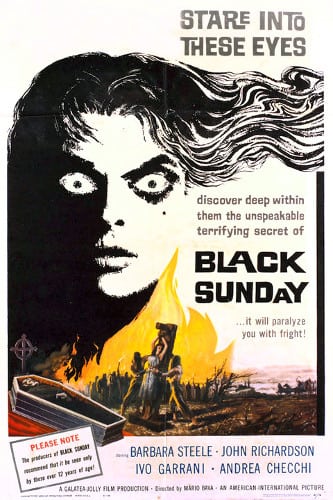
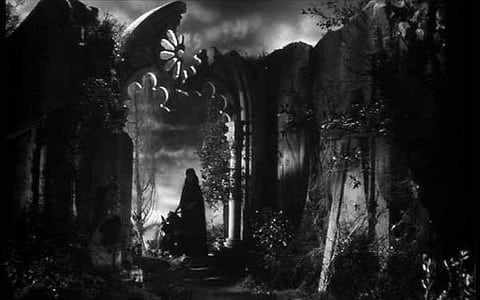
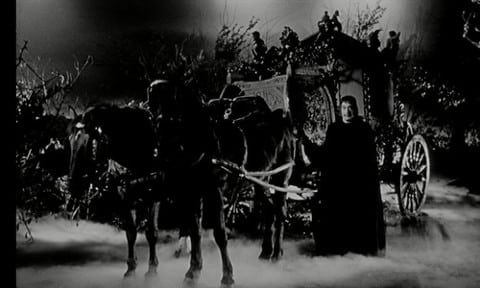



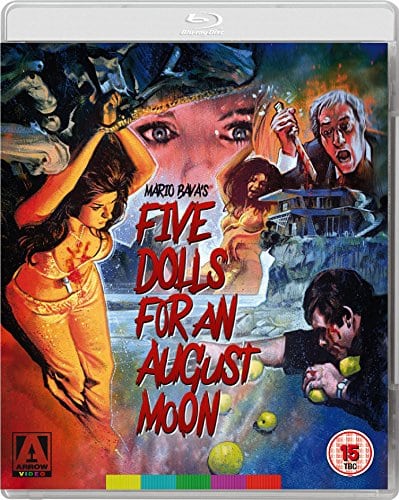
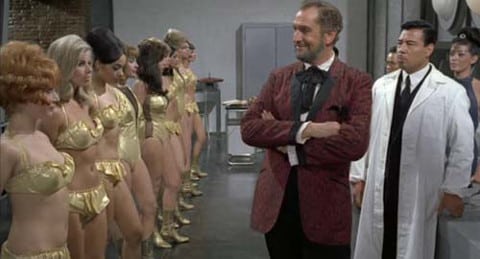
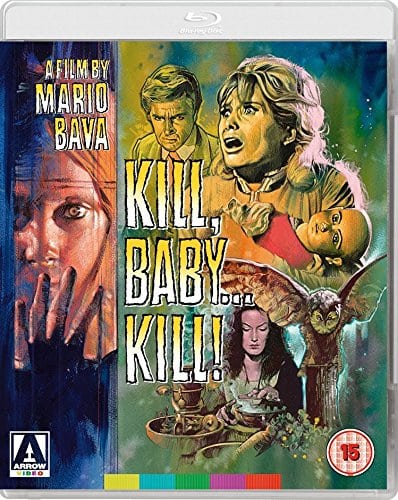
Be the first to comment